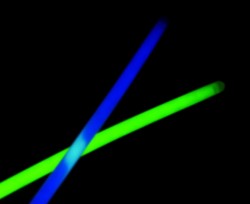Bonfire night bonanza
 Bonfire night gives a great opportunity to put an exciting spin on chemistry.
Bonfire night gives a great opportunity to put an exciting spin on chemistry.
Of course – you can demonstrate flame tests; sprinkle iron filings into a Bunsen flame to make a pretty sparkler affect or carry out a spot of fire-writing (see weblink below).
All of these are fun but tend to fill the lab with smoke and mess, not to mention they can only be done with classes who are on their best behaviour.
Lesson ideas and resource
 I have come up with a couple of ideas for a less stressful Bonfire night lesson.
I have come up with a couple of ideas for a less stressful Bonfire night lesson.
The first is a bonfire night reactions PowerPoint for KS3 classes but could be used to stretch the more able KS2 students. It asks students to discuss which of the things they might see at a Bonfire night party are chemical reactions. This could be used as a starter to any lesson on chemical reactions or could be used for a Bonfire night reactions special lesson where the students could go on to do some of the reactions mentioned above.
For KS4, light-sticks give an interesting way of learning about rates of reaction and collision theory. Students can do this experiment in pairs, each pair getting three glow-sticks. They snap each to activate them and then place one in a beaker of cold water, one in warm water and keep one at room temperature. Whilst the sticks are in the water ask the students to predict what differences they will see in each stick after 10 minutes.
You can show them t he excellent collision theory reaction simulation from KScience (weblink below). Change the conditions to represent the different temperatures the light-sticks are experiencing and run the simulation. Explain to them that the green and blue particles represent the chemicals in the light-stick that mix when you bend them and the red particles are a new chemical that is produced which glows. They should understand from this that the warmer the light-stick is, the faster the rate of reaction and the more ‘glow’ is produced.
he excellent collision theory reaction simulation from KScience (weblink below). Change the conditions to represent the different temperatures the light-sticks are experiencing and run the simulation. Explain to them that the green and blue particles represent the chemicals in the light-stick that mix when you bend them and the red particles are a new chemical that is produced which glows. They should understand from this that the warmer the light-stick is, the faster the rate of reaction and the more ‘glow’ is produced.
They can then compare the brightness of the light-sticks to see if their predictions are correct.
If you have any interesting Bonfire night lesson ideas that you have tried out in your classroom please add a comment below to share it with others.
Weblinks
Fire-writing practical from Creative Chemistry. It is well worth taking a look around this excellent site.
Collision theory reaction simulation
Video that shows how to make glowing reactions of you want to try and make your own glow-sticks in the lab
[…] opportunity to put an exciting spin on chemistry” and offers a PDF version to print of its Bonfire night bonanza lesson ideas and resource suggestions. One of the activities that Gemma, a consultant of […]